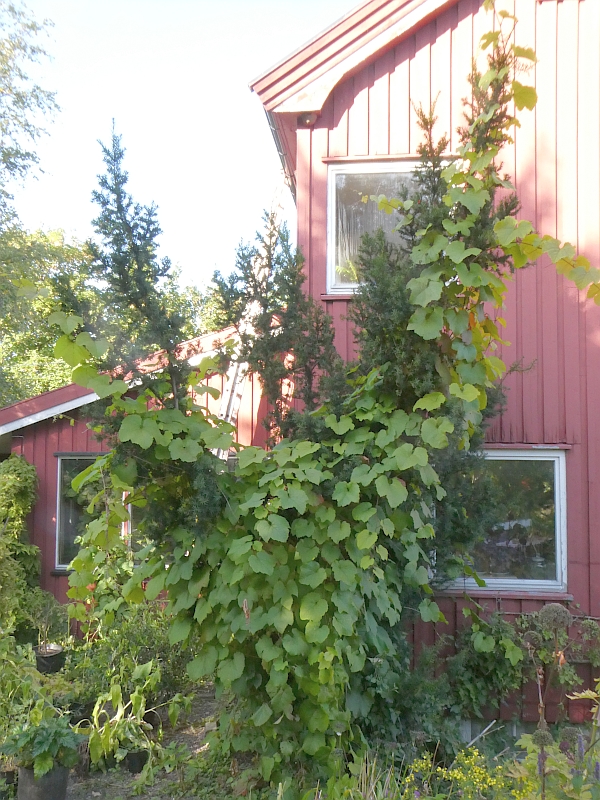I love it when edible plants find their own place in my garden! I planted a hardy grape species Vitis coignetiae from the Far East including Japan, Korea and the Sakhalin. At least, I think this is what it is as I don’t have any records of planting it. I think it originated in a plant sale or cutting from the Ringve Botanical Garden in Trondheim who have a large plant covering the whole wall of a garage. This also produces small fruits which are being increasingly used for wines in Japan (and some breeding is also being done); see the Japanese wiki page: https://ja.wikipedia.org/wiki/%E3%83%A4%E3%83%9E%E3%83%96%E3%83%89%E3%82%A6. This species is dioecious (male and female flowers on different plants), so I guess there is more than one plant at Ringve and there’s little chance of mine producing fruit.
I planted it originally in a shady spot at the corner of the extension (low roof in the picture) some 20 years or more ago. Today there are no leaves or vine above the original planting spot and a vine creeps about 5m from the root horizontally on the ground along the house wall, rooting, along the way, and climbs up into the yew tree I planted next to the house for the birds in winter. The grape has finally reached the top of the yew this summer and is the leaves are almost smothering the yew!

I’m inspired by Eric Toensmeier’s work on the nutrition of perennial vegetables and specifically his article “The most nutritious perennial vegetables for cold climates” (see https://www.permaculturenews.org/2021/06/21/the-most-nutritious-perennial-vegetables-for-cold-climates) to use the leaves of my grape for more than the occasional wrapped dish. The taste of the leaf is good raw!
Eric wrote about cultivated grape leaves: “Grape leaf (Vitis vinifera). Worth eating for nutrition and not just because stuffed grape leaves are delicious. Extremely high in fiber, very high in calcium, magnesium, and Vitamin A, and high in Vitamin E.”
I did find a comment that the shoots of this species are eaten in Japan.
See also the video in this post: https://www.edimentals.com/blog/?p=23629






















